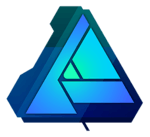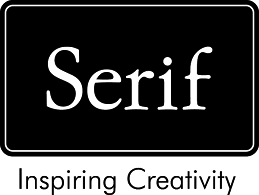Description

Affinity Designer

SEE Electrical
Comprehensive Overview: Affinity Designer vs SEE Electrical
Affinity Designer and SEE Electrical are distinct software products designed for different markets and purposes. Here’s a comprehensive overview of each, including their primary functions, target markets, market share, user base, and key differentiators:
Affinity Designer
a) Primary Functions and Target Markets
- Primary Functions: Affinity Designer is a vector graphics editor developed by Serif for macOS, Windows, and iPad. It is primarily used for creating and editing vector illustrations, as well as working on raster (bitmap) images. Key functions include multi-platform compatibility, advanced vector tools, unlimited artboards, customizable workspaces, and support for a wide range of file formats.
- Target Markets: Affinity Designer primarily targets graphic designers, illustrators, and artists who need professional-grade tools for creating graphics for web, branding, print, UI designs, typography, concept art, and more. It appeals to both individual freelancers and design teams in creative industries.
b) Market Share and User Base
- Market Share: Affinity Designer has been gaining popularity as a cost-effective alternative to Adobe Illustrator, especially among individual designers and small businesses due to its pricing structure (one-time purchase vs. subscription model).
- User Base: The user base for Affinity Designer includes both professionals and hobbyists, appealing particularly to those looking for a professional-quality tool without the recurring costs of subscription software.
c) Key Differentiating Factors
- Pricing: Affinity Designer is available for a one-time purchase, making it more accessible financially compared to subscription-based models like Adobe Illustrator.
- Cross-Platform Compatibility: Affinity Designer supports macOS, Windows, and iPad, providing seamless cross-platform support.
- Performance and Features: Known for its high performance, even with complex tasks, it offers robust features like non-destructive effects and adjustments, real-time view rendering, and advanced typography options.
SEE Electrical
a) Primary Functions and Target Markets
- Primary Functions: SEE Electrical is a software solution developed by IGE+XAO for electrical engineering and design. It specializes in creating electrical schematics and documentation, offering functionalities like automated wire numbering, cross-references, terminal designs, and PLCs.
- Target Markets: SEE Electrical is targeted towards electrical engineers and designers involved in the design and documentation of electrical systems in various industries, such as industrial automation, building installation, and machinery manufacture.
b) Market Share and User Base
- Market Share: SEE Electrical is a niche product within the electrical engineering and CAD software market. It competes with other electrical CAD systems like EPLAN and AutoCAD Electrical.
- User Base: The user base is primarily composed of electrical engineers and professionals working in industrial sectors that require precise and standardized electrical documentation and design solutions.
c) Key Differentiating Factors
- Technical Specialization: SEE Electrical is specialized for electrical engineering tasks, providing industry-specific features like automatic numbering, standardized symbol libraries, and ready-to-use templates for electrical documentation.
- User Orientation: It focuses on an intuitive interface tailored to the workflow of electrical engineers, making it easier to learn and use for users from that field as opposed to general CAD software.
- Integration Capabilities: SEE Electrical offers integration with other industrial systems and supports various standards (IEC, IEEE, etc.), which makes it a practical tool for electrical design and engineering.
Overall Comparison
Affinity Designer and SEE Electrical serve entirely different markets—creative design vs. electrical design—and thus do not directly compete with each other. Their market strategies, pricing models, and feature sets are geared towards maximizing value for their respective user bases, making them specialized tools in their fields. Affinity Designer excels in graphical and artistic applications, while SEE Electrical provides robust capabilities for technical and industrial design work.
Contact Info

Year founded :
1987
Not Available
Not Available
United Kingdom
Not Available

Year founded :
Not Available
Not Available
Not Available
Not Available
Not Available
Feature Similarity Breakdown: Affinity Designer, SEE Electrical
Affinity Designer and SEE Electrical are software products tailored for different audiences and purposes, which naturally influences their feature sets. Here's a breakdown for each of the requested aspects:
a) Core Features in Common
Despite being aimed at different markets (graphic design versus electrical design), Affinity Designer and SEE Electrical share some core features common to many design software tools:
-
Vector Design Tools:
- Both have capabilities to create vector graphics, though the complexity and application of these tools vary given their intended use cases.
-
Layer Management:
- Both products offer robust layer management, allowing users to control the visibility, stacking, and locking of objects and components.
-
Grid and Guides:
- Each tool includes grid and guide management for precision in design layouts, vital in both graphic and technical design fields.
-
Export Options:
- Various file export formats are available in both, enabling the sharing and use of designs across different platforms and workflows.
b) User Interface Comparison
Affinity Designer:
- Design-Centric Layout: The interface is sleek and tailored for creatives with a focus on providing quick access to a wide range of design tools like pen, shape, and text tools.
- Persona Workflow: Unique to Affinity, it offers personas—different environments within the same app for vector editing, raster editing, and export functions, enhancing workflow flexibility.
- Customizability: Highly customizable workspace for designers to arrange toolbars, panels, and menus according to their preferences.
SEE Electrical:
- Engineering-Focused Interface: The interface is specialized for electrical schematic creation, with entities and symbols pertinent to electrical engineers.
- Functional Organization: Offers domain-specific tools such as circuit symbol libraries, electrical component configurations, and documentation features prominently accessible.
- Project Management: Includes project organization features, accommodating large projects with multiple interconnected diagrams and sheets.
c) Unique Features
Affinity Designer Unique Features:
- Continual Zoom: Offers the ability to zoom to over 1,000,000%, allowing incredibly precise work, especially useful in detailed graphic design.
- Real-time Performance Rendering: Provides powerful real-time rendering of complex effects, designed to leverage hardware acceleration for smoother performance.
- Raster and Vector Integration: Allows seamless switching between raster and vector workspaces within the same project.
SEE Electrical Unique Features:
- Intelligent Electrical Design Tools: Features automated functionalities like automatic wire numbering, terminal block generation, and bills of materials creation.
- Symbol and Template Libraries: Contains comprehensive libraries specific to electrical engineering, facilitating quick design and adherence to standards.
- Report Generation: Automated generation of reports and parts lists, essential for documentation and project management in electrical engineering contexts.
Both tools are optimized for their respective audiences and focus on delivering exceptional functionality for their use cases. However, they do overlap in standard design features while offering unique strengths for their target users.
Features

Not Available

Efficient Project Management
Collaboration and Sharing
Design and Drawing Tools
User-Friendly Interface
Best Fit Use Cases: Affinity Designer, SEE Electrical
Affinity Designer
a) For what types of businesses or projects is Affinity Designer the best choice?
Affinity Designer is a versatile vector graphic design software that is ideal for a wide range of creative professionals and businesses, including:
-
Graphic Designers and Illustrators: It is perfect for creating detailed illustrations, icons, branding materials, typography, and logos due to its robust vector editing tools.
-
Marketing and Advertising Agencies: The software is excellent for producing promotional content, such as posters, flyers, and advertisements, given its precision and ease of use.
-
Small to Medium Enterprises (SMEs): These businesses can leverage the cost-effective nature of Affinity Designer for designing in-house marketing materials without sacrificing professional quality.
-
Web and App Designers: Its pixel-perfect alignment and export options make it ideal for designing UI/UX elements for websites and applications.
-
Freelancers and Independent Creators: Affinity Designer offers a one-time purchase option, making it a budget-friendly choice for freelancers working on varied creative projects.
d) Industry Verticals or Company Sizes
- Creative Industries: Artists, designers, and multimedia professionals across various sectors.
- Small to Medium Businesses (SMBs): Due to the cost-effectiveness and comprehensive toolset.
- Educational Institutions: For students and educators in graphic design programs.
SEE Electrical
b) In what scenarios would SEE Electrical be the preferred option?
SEE Electrical is specialized CAD software for electrical engineering tasks, particularly advantageous in scenarios such as:
-
Electrical Engineering Firms: Ideal for designing and documenting electrical systems, including schematics for industrial machinery, building electrical systems, and automation equipment.
-
Manufacturing and Industrial Automation: Suitable for creating detailed electrical designs that must adhere to industry standards, particularly in manufacturing processes and automation controls.
-
Construction and Building Services: Useful in designing electrical layouts for buildings and infrastructure projects, ensuring compliance with safety and regulatory standards.
-
Renewable Energy Projects: For designing and mapping the electrical components of solar, wind, and other renewable energy systems.
d) Industry Verticals or Company Sizes
- Engineering Firms: Supporting large-scale projects with detailed electrical designs.
- Utilities and Energy Sector: Tailored for complex energy distribution and management systems.
- Large Manufacturing Enterprises: For designing and maintaining complex electrical systems in production facilities.
- Construction Companies: Useful for comprehensive electrical planning in building projects.
Summary
Affinity Designer caters to creative industries with its strong vector graphics capabilities, making it ideal for designers and creative professionals in arts, marketing, and UI/UX design. SEE Electrical is specialized for electrical engineering tasks, making it preferable for industries focused on electrical design, manufacturing, and construction. While Affinity Designer serves a broad audience from freelancers to creative departments within companies, SEE Electrical is more suited for engineering firms and larger industrial enterprises.
Pricing

Pricing Not Available

Pricing Not Available
Metrics History
Metrics History
Comparing undefined across companies
Conclusion & Final Verdict: Affinity Designer vs SEE Electrical
Conclusion and Final Verdict: Affinity Designer vs. SEE Electrical
When evaluating Affinity Designer and SEE Electrical, it’s essential to acknowledge that these two products serve distinct purposes, catering to different professional needs. Affinity Designer is primarily a vector graphics editor used extensively by designers and artists for creating illustrations, UI/UX designs, and other graphic content. On the other hand, SEE Electrical is tailored for electrical engineering, focusing on designing electrical diagrams and schematics.
a) Considering all factors, which product offers the best overall value?
Best Overall Value:
-
If you are a graphic designer, digital artist, or in any creative field focused on visual content creation, Affinity Designer provides the best value. It offers a robust set of features comparable to high-end alternatives like Adobe Illustrator but at a significantly lower, one-time cost.
-
For electrical engineers or anyone working within the electrical field needing precise and specialized tools for designing electrical circuits and schematics, SEE Electrical represents a high value. It is adept at handling the specific requirements of electrical design with features that are not typically found in graphic design software.
b) Pros and Cons of Choosing Each Product
Affinity Designer:
-
Pros:
- Cost-effective with a one-time purchase model.
- Comprehensive set of tools comparable to leading graphic design software.
- Compatibility across Windows, macOS, and iPad platforms.
- Regular updates and a strong user community.
-
Cons:
- Steeper learning curve for beginners unfamiliar with vector graphic design.
- May not be suited for non-design related tasks like technical drawing or electrical schematics.
SEE Electrical:
- Pros:
- Specialized tools for creating precise electrical diagrams and schematics.
- Industry-specific features such as automated wiring, circuit design, and component libraries.
- Facilitates compliance with electrical standards.
- Cons:
- Higher cost often due to a subscription-based model or tiered licensing.
- Not designed for graphic or artistic design work, limiting its use beyond electrical engineering.
- Requires specific domain knowledge to fully leverage its capabilities.
c) Recommendations for Users Deciding Between Affinity Designer vs. SEE Electrical
-
For Creative Professionals: If your work involves visual and graphic design, Affinity Designer is highly recommended. It is the ideal choice for artists, illustrators, or UX/UI designers due to its creative capabilities and cost-effectiveness.
-
For Electrical Engineers: SEE Electrical is the clear choice if your needs revolve around designing and documenting electrical systems. Its specialized tools and industry-specific functionalities will greatly enhance productivity and accuracy in electrical design projects.
-
For Interdisciplinary Needs: If you require both graphic design and technical drawing capabilities and budget allows, consider investing in both products or exploring additional tools that may bridge the gap between creative and technical design tasks.
Ultimately, the choice between Affinity Designer and SEE Electrical hinges significantly on your professional requirements. Assess your current and future project needs to determine which product aligns best with your objectives, ensuring that you get the most value from your investment.
Add to compare
Add similar companies



